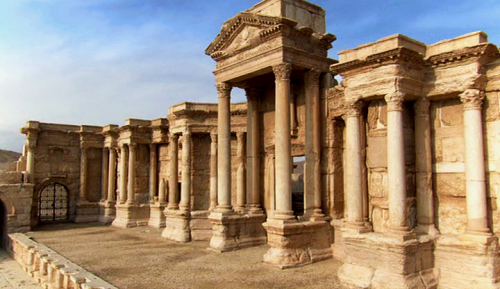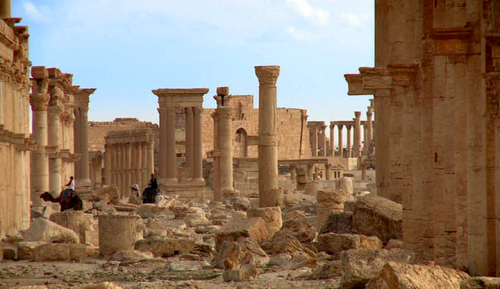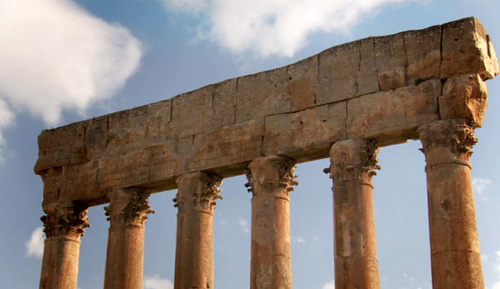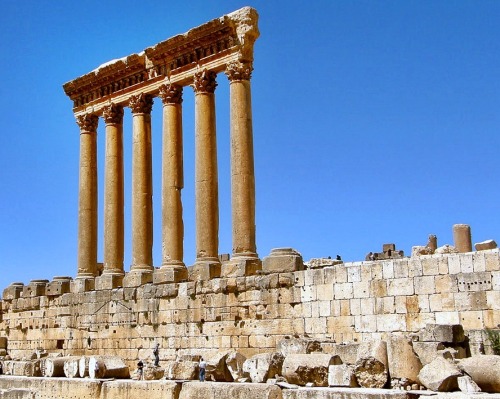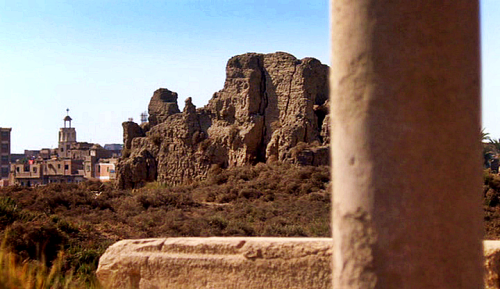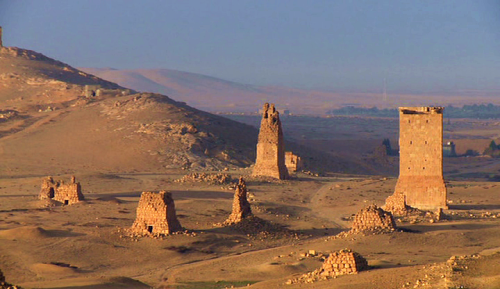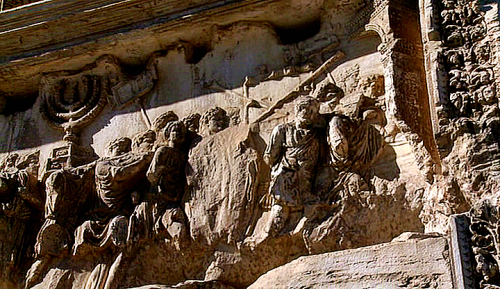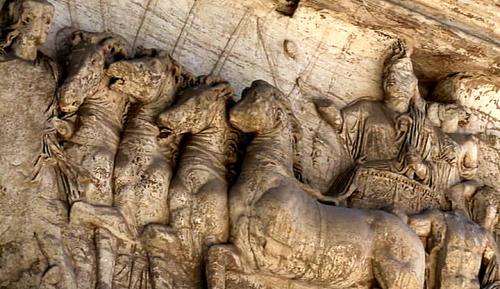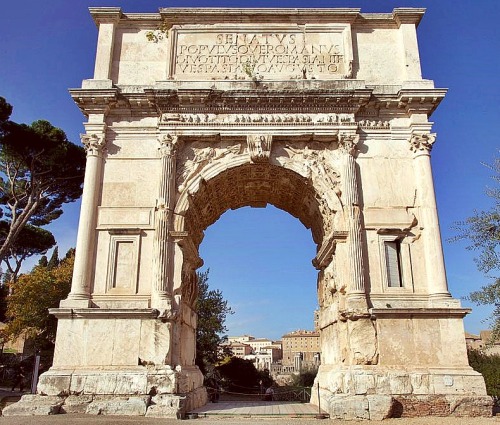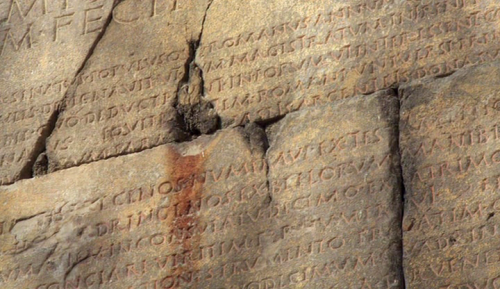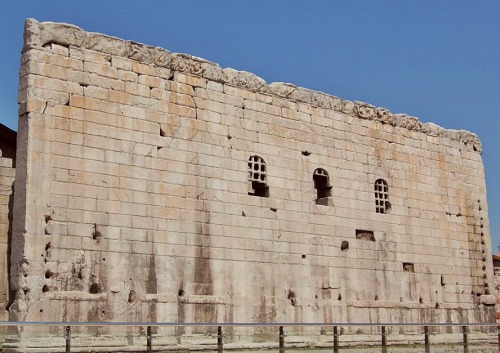#city of man city of god
Ancient Worlds - BBC Two
Episode 6 “City of Man, City of God”
Palmyra2010
Part II
Palmyra, Syria
Post link
Ancient Worlds - BBC Two
Episode 6 “City of Man, City of God”
Palmyra2010
Part I
Palmyra, Syria
Post link
Ancient Worlds - BBC Two
Episode 6 “City of Man, City of God”
TheTemple of Jupiter Baal, in Baalbek.
ThePhoenician city of Baalbek was known as Heliopolis (the city of the Sun) during the Hellenistic period.
The city became an important religious center during Greco-Roman times and it was one of the largest sanctuaries in the Roman Empire.
The greatest temple of the city was sacred to Jupiter Baal, (Heliopolitan Zeus), identified with the Sun. The Jupiterworshipped there was also understood to be Baal-Hadad, a local storm deity who had been honoured for centuries. The temple was constructed during the 1st century AD (completed circa 60 AD) on top of a podium and foundations presumably from a previous ancient temple. The temple had more than 50 Corinthian columns, 20 meters high, but today only six columns remain standing.
Baalbek, with its colossal structures, is one of the finest and most impressive examples of Imperial Roman architecture.
Baalbek, Lebanon
Post link
Ancient Worlds - BBC Two
Episode 6 “City of Man, City of God”
The remains of the Christian Basilica at Hermopolis Magna.
Hermopolis Magna was an ancient city of Upper Egypt known as Khmunu (“the City of the Eight”). It was was the ancient capital of the 15th Hare nome (administrative division, province of ancient Egypt)
The great deity worshiped there was Thoth, the Egyptian god of the Moon, the inventor of writing, the creator of languages and the patron of scribes. The Greeks associated Thoth with their god Hermes(so they called the city Hermopolis). The temple of Thoth made the city an important religious center during the Ptolemaic period.
At Hermopolis, Greco-Roman and Egyptian culture mixed, resulting in temples to a variety of gods. The most impressive structure today dates to the 5th century CE: the Christian basilica. The 29 monolithic columns of red granite with their fine Corinthian capitals are almost all that is left of the basilica (c. 410-440 AD) which covered an area of 1195 square meters. The stylobate and the foundations of the basilica were built of reused blocks of stone from different periods.
The city had other important temples, among them a temple dedicated to Amon, another to Nero, a Ptolemaic sanctuary and a temple dedicated to Alexander the Great and his half-brother, Philip Arrhidaeus (Philip III of Macedon).
Hermopolis Magna - Al-Ashmūnayn, Egypt
Post link
Ancient Worlds - BBC Two
Episode 6 “City of Man, City of God”
Palmyra was one of the most important cultural centres of the ancient world. Located in an oasis in the Syrian desert, it was a vital caravan stop for travellers crossing the desert. Palmyra grew steadily in importance as a city on the trade route linking Persia, India and China with the Roman Empire -it was made part of the Roman province of Syria in the mid-first century AD-. In 129, Palmyra was visited by emperor Hadrian, who granted it the status of a free city.
Palmyra exerted a decisive influence on the evolution of neoclassical architecture and modern urbanization, uniting the forms of Graeco-Roman art with indigenous elements and Persian influeces. Unique creations came into existence, notably in the domain of funerary sculpture.
Outside the ancient walls, along the four main access roads to the city, stood four cemeteries, Valley of the Tombs, which feature different types of tomb. The oldest and most distinctive group is represented by the funerary towers, tall multi-storey sandstone buildings belonging to the richest families. Some towers had four storeys and could accommodate up to 300 sarcophagi.
Valley of the Tombs, Palmyra -Tadmur- Syria
Post link
Ancient Worlds - BBC Two
Episode 6 “City of Man, City of God”
TheArch of Titus (Arcus Titi) is a triumphal arch located at the entrance to the Forum Romanum, at the highest point of the via Sacra.
The arch was constructed in 81 AD by the Roman Emperor Domitian shortly after the death of his older brother Titus (Emperor from 79 to 81 AD) to commemorate the victories of his father VespasianandTitus in the Jewish WarinJudaea.
In 66 AD Jewish Zealots started a revolt against the Roman occupation of Judaea. Vespasian was sent from Rome to suppress the revolt. After Vespasian became emperor, his son Titus took over command of the troops. The siege of Jerusalem in 70 AD was the decisive event of the war. The city was sacked, its famous Second Temple destroyed and its vast riches plundered.
The original inscription on the east side of the arch is still in situ. Originally the letters would have been inlaid with gilded bronze. It reads:
“SENATUS POPOLUS QUE ROMANUS DIVO TITO DIVI VESPASIANI F(filio) VISPASIANO AUGUSTO” - The Roman Senate and People to the divine Titus Vespasianus Augustus, son of the divine Vespasian
The south panel depicts the spoils taken from the Temple in Jerusalem, carried on litters in a triumphal procession, amongst then the silver trumpets and the seven-branched golden Candelabra(Menorah), carved in deep relief. The north panel depicts Titus as Triumphator,riding a four-horse chariot (quadriga) and shows him being crowned by a personification of Victory.ThegoddessRoma stands in front, holding the bridle of one of the horses. This is one of the first examples of divinities and humans being present in one scene together.
The arch of Titus is one of Rome’s oldest and most well preserved arches. It has provided the general model for many triumphal arches, like the Arc de Triomphe in Paris, France.
Post link
Ancient Worlds - BBC Two
Episode 6 “City of Man, City of God”
TheRes Gestae Divi Augusti, (The Deeds of the Divine Augustus) is the political testament, official autobiography and funerary inscription of the first Roman emperor, Augustus (63 BC – 14 AD
The text, written by Augustus himself, gives a first-person record of his life and accomplishments and tell us us how he wanted to be remembered. The work is very impersonal and selective; he doesn’t mention his failures, only his achievements. He wrote it as an Elogium (formal funerary oration) and as propaganda. Augustus may have intended it to be read out in the Senate after his death. In accordance with his wishes, it was inscribed on two bronze pillars in front of his mausoleum in Rome.
The achievements of the Divine Augustus were copied and inscribed on monuments throughout the empire. The best preserved version is on the Temple of Rome and Augustus in Ancyra, Galatia (modern Ankara, Turkey), known as the Monumentum Ancyranum.
Monumentum Ancyranum, Ankara, Turkey
Post link


